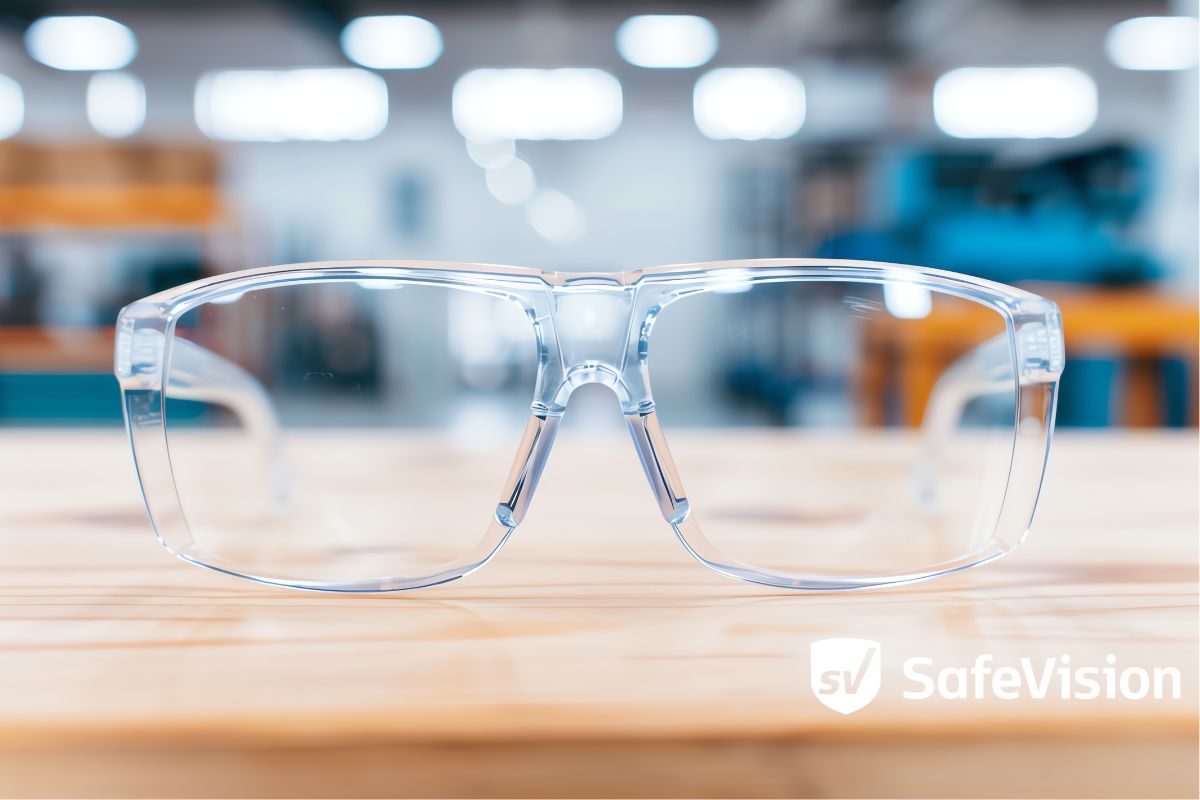Safety, Safety Glasses
Understanding ANSI Z87.1 Prescription Safety Eyewear Standards
Regarding workplace safety, especially in environments where eye hazards are prevalent, understanding ANSI Z87.1’s standard is the benchmark for protective eyewear. These standards, developed by the American National Standards Institute (ANSI), ensure that safety glasses provide adequate protection against various hazards. We’ll dive into the key aspects of the ANSI Z87.1 standards, focusing on high-mass impact resistance, high-velocity impact resistance, penetration tests, ignition tests, D3/D4/D5 dust and splash resistance, and optical quality.
High Mass Impact Resistance
One of the critical tests under ANSI Z87.1 is the high mass impact resistance test. This test simulates the impact of a heavy object falling onto the eyewear. The eyewear is subjected to a pointed object, typically a steel ball weighing about 500 grams, dropped from 50 inches. The eyewear must withstand this impact without breaking, lens dislodging, or allowing the object to penetrate the eye. In real-world scenarios, like a tool falling or an accidental bump against a hard surface, the glasses will protect the wearer’s eyes from serious injury.
High-Velocity Impact Resistance
In addition to high mass impact resistance, eyewear must pass the high-velocity impact resistance test. This test involves shooting a ¼-inch steel ball at the eyewear at a speed of approximately 167 feet per second! The purpose is to mimic smaller, fast-moving particles that could cause eye injuries, such as flying debris from grinding or cutting operations. Safety glasses that pass this test protect against these high-speed dangers, ensuring that even the most intense impacts are less likely to result in eye injuries.
Penetration Test
The penetration test evaluates the eyewear’s ability to withstand sharp objects. A needle with a minimum weight of 1.56 oz is dropped from a height of 50 inches to try and penetrate the lens. The eyewear must resist penetration to pass the test, ensuring that sharp objects, like shards of glass or metal, won’t pierce the lenses and reach the eyes. This standard aspect is vital in environments with a risk of sharp projectiles or debris.
Ignition Test
The ignition test assesses the eyewear’s resistance to catching on fire. During this test, a red-hot metal rod is pressed against the spectacles for at least 5 seconds. The ignition test is repeated on all the various parts of the frame. To pass the test, the material should not ignite or continue to burn once the rod is removed. This test ensures that safety eyewear can protect against risks of fire or high-heat exposure, which is crucial in industries like welding, chemical processing, and foundries.
D3/D4/D5 Dust and Splash Resistance
ANSI Z87.1 also includes standards for protection against liquid splashes, dust, and fine particles, categorized under D3, D4, and D5.
- D3: Splash – protection against liquid droplets.
- D4: Dust – protection against large dust particles
- D5: Fine Dust – protection against fine dust particles like powders.
Eyewear marked with these designations offers additional protection in environments with a high risk of exposure to chemicals, sprays, or fine dust particles. This resistance is particularly important in industries like agriculture, pharmaceuticals, and woodworking, where such hazards are common.
Optical Quality
Lastly, ANSI Z87.1 ensures that prescription safety eyewear protects the eyes and maintains high optical quality. Optical quality includes tests for lens clarity, distortion, and the ability to transmit light properly. Eyewear that meets these standards will not interfere with the wearer’s vision, ensuring they can work safely and efficiently without experiencing visual fatigue or errors due to poor lens quality.
Conclusion
The ANSI Z87.1 standard is a comprehensive guide that ensures prescription safety eyewear provides maximum protection across a wide range of hazards. Whether it’s high mass or high-velocity impacts, sharp objects, or liquid splashes, eyewear that meets these standards offers reliable protection. Additionally, the emphasis on optical quality ensures that wearers can perform their tasks with clear, undistorted vision. When selecting safety eyewear, looking for the ANSI Z87.1 marking is crucial. Selecting eyewear represents a commitment to safety and quality in the most demanding environments. Look for the symbols Z87-2+ for high-impact-resistant prescription safety glasses. ALL SafeVision & Pentax prescription safety glasses carry these marks as they’ve met these standards. You can be sure you or your employees wear high-quality PPE that meets OSHA requirements. Check out our full catalog on learn more about our corporate programs, as we’re the leading partner in North America.

